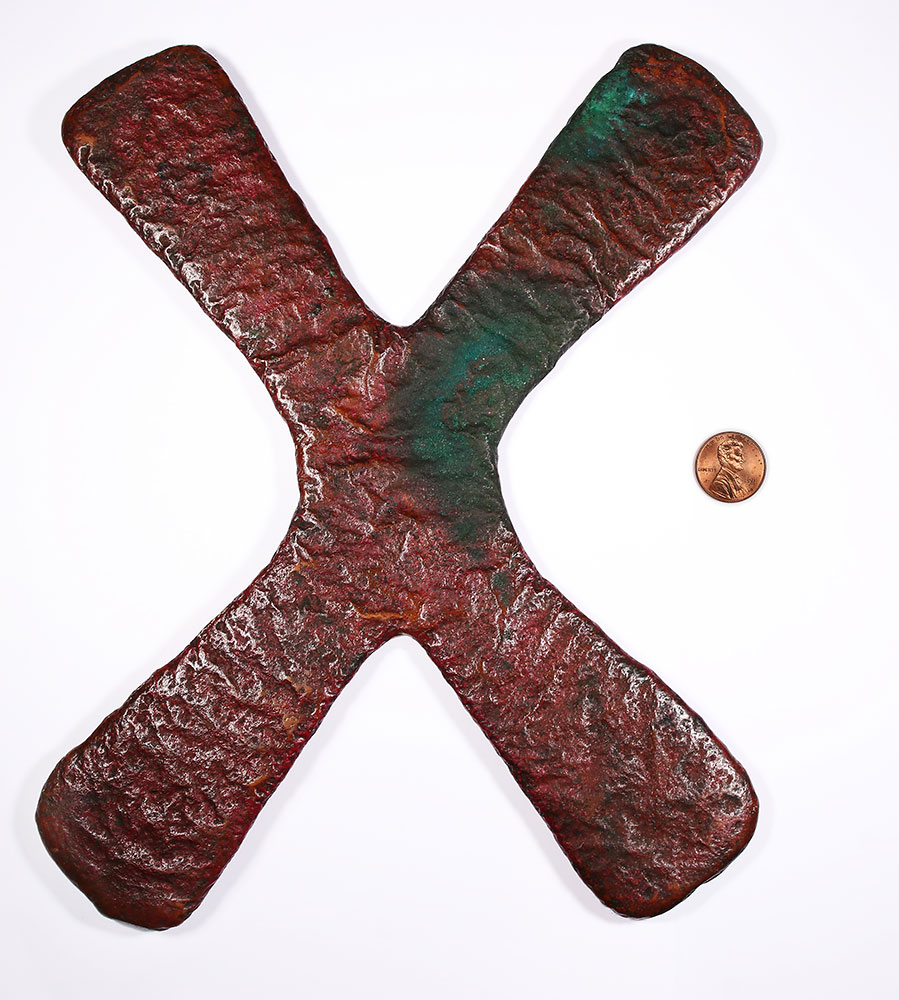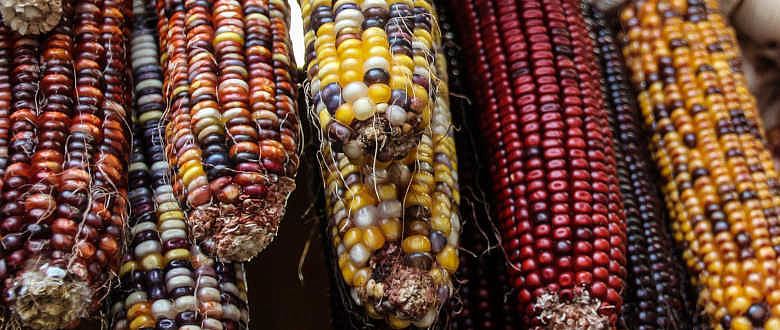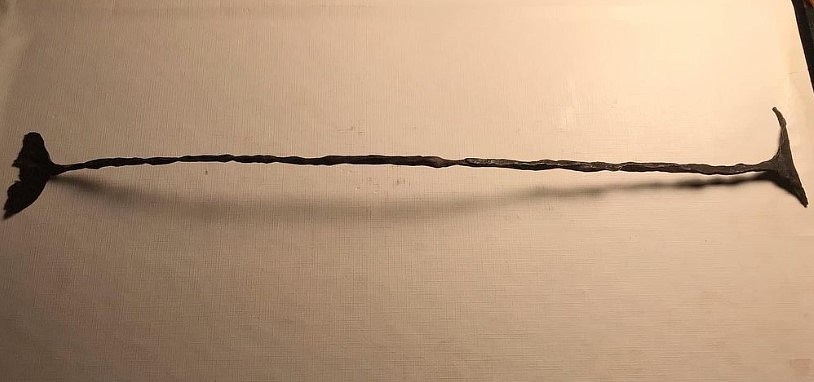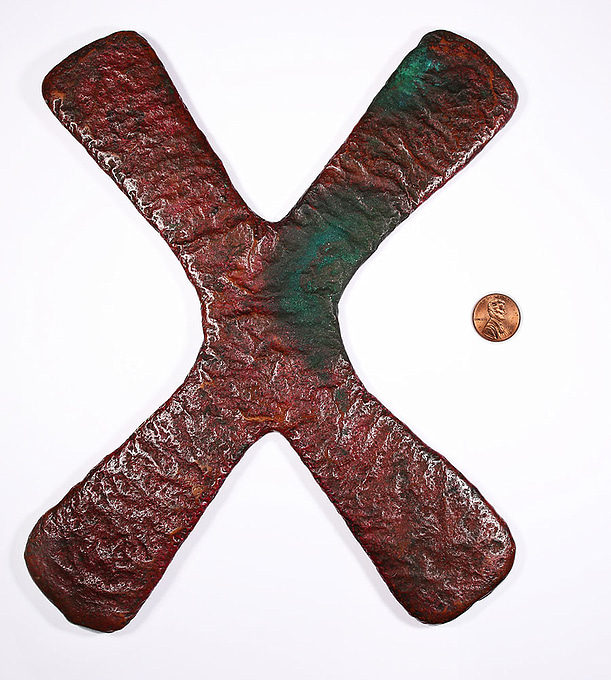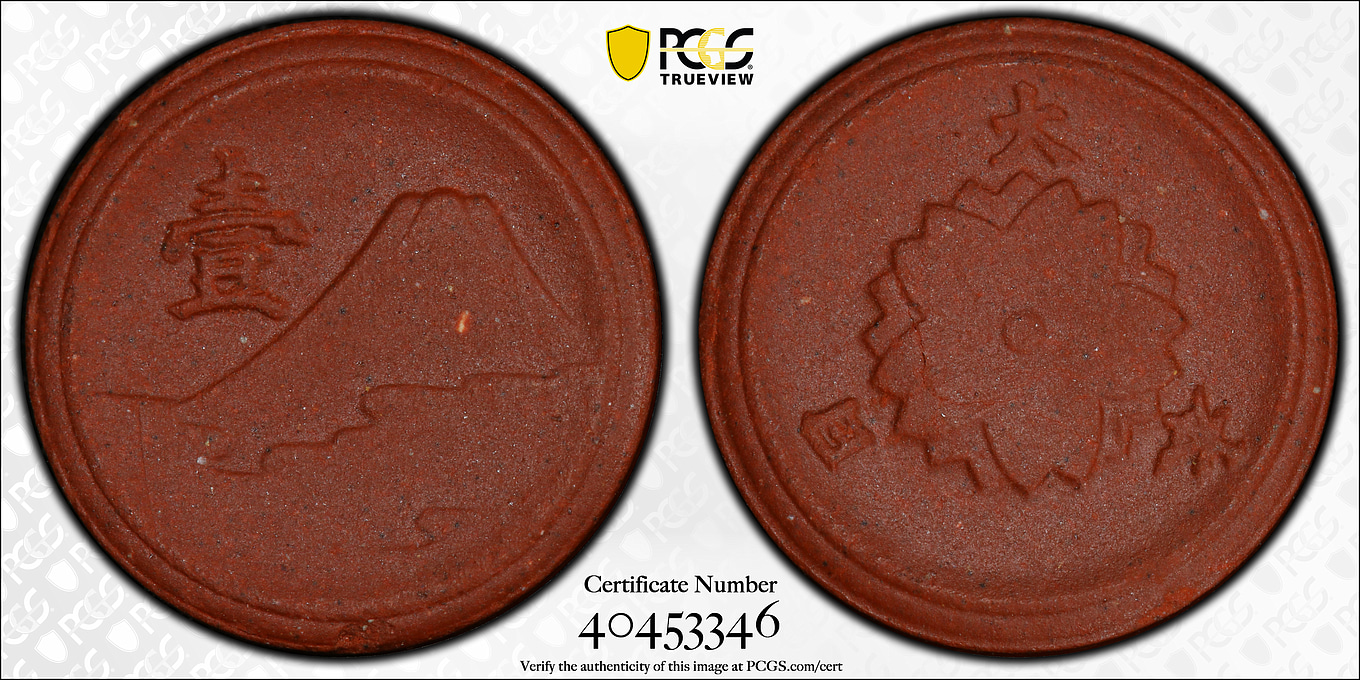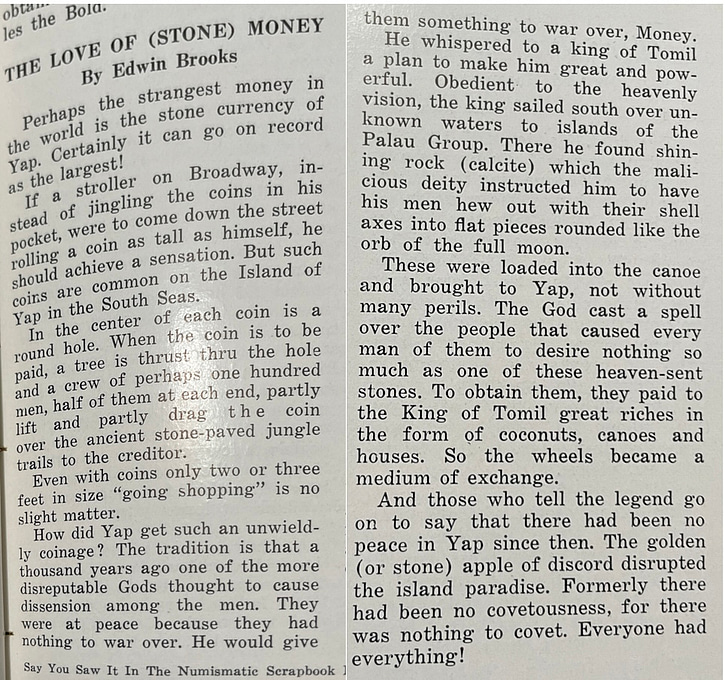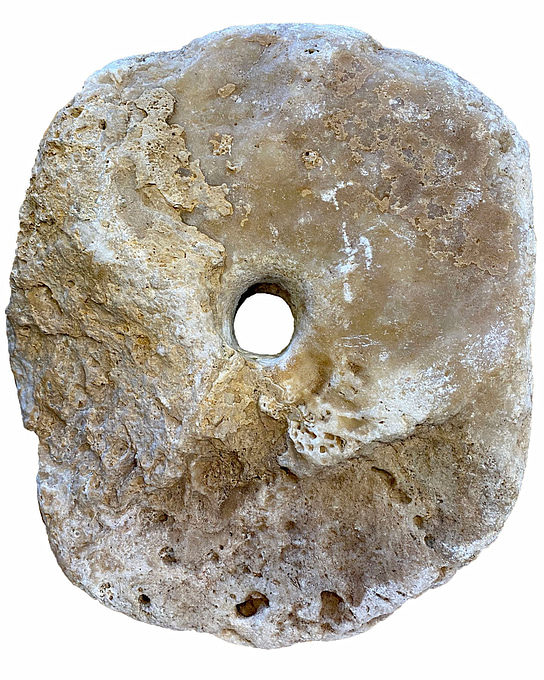 Guest
Guest- Welcome
- Recent Posts
- COLLECTING
- Leaderboard NEW!
- Browse Sets
- MyCollect Catalog
- Guess the Grade NEW!
- VERIFY
- TheftCheck
- Report Stolen
- EXPLORE
- Pages
- Groups
- Articles
- Shows & Events
- ADVERTISE
- MyCollect Ads
About This Group
Ethnographic pieces that were used for money across the world.
- Public Group
- 15 Posts
- 20 Photos
- 0 Videos
- World Coins
- Managed by CalicoCoins
Recent Updates
- Corn, yes corn was once a currency. In what is today the United States, Quebec and Canada corn was once a trade unit. Massachusetts as a colony made corn legal tender in 1631. Connecticut made “Indian corn” legal tender in 1642 at the value of 2 shillings per bushel.Corn, yes corn was once a currency. In what is today the United States, Quebec and Canada corn was once a trade unit. Massachusetts as a colony made corn legal tender in 1631. Connecticut made “Indian corn” legal tender in 1642 at the value of 2 shillings per bushel.0 Comments 0 Shares 561 ViewsPlease log in to like, share and comment!Commenting is disabled.
- From China “tallies”. These Lacquered Bamboo sticks known as tallies are carved, inked and or have inscriptions burned and pressed into them. These have been traced as issued back to the 1890’s and possibly earlier but known to be in use into 1929 and possibly later. These were issued by small banks or merchants which couldn’t issue their own banknotes. This example in Chinese says “One load of rice in husk” on the top and “Red Flag Commune” on the bottom.From China “tallies”. These Lacquered Bamboo sticks known as tallies are carved, inked and or have inscriptions burned and pressed into them. These have been traced as issued back to the 1890’s and possibly earlier but known to be in use into 1929 and possibly later. These were issued by small banks or merchants which couldn’t issue their own banknotes. This example in Chinese says “One load of rice in husk” on the top and “Red Flag Commune” on the bottom.0 Comments 0 Shares 469 Views
- Bailer Shell Money from New Guinea. A shell from the Cymbium nicknamed Melo, Bailer or Moon Shell were used as both ornaments and for trade. These shells would often be holed, as this example, and worn on chest, head, or privates. For value, 20 of these shells would buy a canoe in the Badu tribe. In the Mount Hagen area, the shells were often used in the purchase of a bride with a bride costing upwards of 10 pigs and 5 bailer shells. A bailer shell was worth about one pig, with documentation in 1934 showing that the value of one bailer shell was worth 2 pigs in the highlands.Bailer Shell Money from New Guinea. A shell from the Cymbium nicknamed Melo, Bailer or Moon Shell were used as both ornaments and for trade. These shells would often be holed, as this example, and worn on chest, head, or privates. For value, 20 of these shells would buy a canoe in the Badu tribe. In the Mount Hagen area, the shells were often used in the purchase of a bride with a bride costing upwards of 10 pigs and 5 bailer shells. A bailer shell was worth about one pig, with documentation in 1934 showing that the value of one bailer shell was worth 2 pigs in the highlands.0 Comments 0 Shares 543 Views
- A “Kissi Penny” From the area of Sierra Leone, Liberia and French Guinea it is known as a “coin with a soul” if it is broken it must be repaired by a witch doctor. These were worth about 2 cents and used from 1800 until 1920. By the 1900’s the value had dropped to about one English Penny hence the English name. As for value, 20 would buy a cow, 60-80 would buy a wife and between 100-200 would buy a slave.A “Kissi Penny” From the area of Sierra Leone, Liberia and French Guinea it is known as a “coin with a soul” if it is broken it must be repaired by a witch doctor. These were worth about 2 cents and used from 1800 until 1920. By the 1900’s the value had dropped to about one English Penny hence the English name. As for value, 20 would buy a cow, 60-80 would buy a wife and between 100-200 would buy a slave.2 Comments 0 Shares 546 ViewsCommenting is disabled.
- Yes, that looks exactly like the ones I have. Thanks for the info, I always wondered if these were legitimately used as currency 🏼Yes, that looks exactly like the ones I have. Thanks for the info, I always wondered if these were legitimately used as currency 👍🏼
- 2023-07-21 01:32:24
- Yep, a real currency.Yep, a real currency.
- 2023-07-21 02:23:19
- 1

-
- Does anybody know if “Soul Money” were really used as currency? By soul money, I’m talking about long metal strands that are twisted into long thin spirals. I have some that I bought at a coin show about 15 years ago. The story was that they were used as currency and also that each one somehow contained the “soul” of the maker’s ancestors and that if you broke them in half the soul would be released. If I can find them I’ll post pictures, I have a group of about 5 of them. I never knew if these were legit used as currency or just some marketing gimmick though. Any info would be appreciated, thanks.Does anybody know if “Soul Money” were really used as currency? By soul money, I’m talking about long metal strands that are twisted into long thin spirals. I have some that I bought at a coin show about 15 years ago. The story was that they were used as currency and also that each one somehow contained the “soul” of the maker’s ancestors and that if you broke them in half the soul would be released. If I can find them I’ll post pictures, I have a group of about 5 of them. I never knew if these were legit used as currency or just some marketing gimmick though. Any info would be appreciated, thanks.1 Comments 0 Shares 786 ViewsCommenting is disabled.
- It sounds like a Kissi Penny. I'll post about it in a few minuets.It sounds like a Kissi Penny. I'll post about it in a few minuets.
- 2023-07-21 00:52:15
- 1

-
- From what is today Thailand this is a K’A K’IM. These pieces made and used between 1290-1556 AD were also known as tamlung with some smaller denominations made from less valuable metals. These pieces were stamped as flat rings, then cut at the back and bent into the shape of a women’s pelvis. They were counter stamped with denomination and dynasty marks along with the city name.From what is today Thailand this is a K’A K’IM. These pieces made and used between 1290-1556 AD were also known as tamlung with some smaller denominations made from less valuable metals. These pieces were stamped as flat rings, then cut at the back and bent into the shape of a women’s pelvis. They were counter stamped with denomination and dynasty marks along with the city name.0 Comments 0 Shares 542 Views
- The Katanga Cross is a form money made of copper bullion poured into a sand cast in the form of a cross. These crosses were made by the Katanga tribe and circulated in the territory of Katanga, which was a rich area for copper mining. The Katanga Cross was so valuable at the time that a single cross could buy 10 kilos of flour, two crosses purchased a gun, three to five crosses bought a male slave, and five to 10 could buy a female slave.The Katanga Cross is a form money made of copper bullion poured into a sand cast in the form of a cross. These crosses were made by the Katanga tribe and circulated in the territory of Katanga, which was a rich area for copper mining. The Katanga Cross was so valuable at the time that a single cross could buy 10 kilos of flour, two crosses purchased a gun, three to five crosses bought a male slave, and five to 10 could buy a female slave.0 Comments 0 Shares 580 Views
- Does anybody know about these British Military Canteen Tokens? One source I read said they were made of Bakelite, but another said they were laminated paper. I bought it out of curiosity recently and have been meaning to try and find out more about it.Does anybody know about these British Military Canteen Tokens? One source I read said they were made of Bakelite, but another said they were laminated paper. I bought it out of curiosity recently and have been meaning to try and find out more about it.3 Comments 0 Shares 751 ViewsCommenting is disabled.
- The piece is also listed on tokencatalog.com as TC-469490 and TC-607934 which lists the piece as red fiber.The piece is also listed on tokencatalog.com as TC-469490 and TC-607934 which lists the piece as red fiber.
- 2023-07-19 03:11:24
- 1

- https://en.numista.com/catalogue/exonumia63332.html
- 2023-07-19 03:06:42
- 1

- Thanks, so it’s Bakelite on that site, I also see your other reference says red fiber though.Thanks, so it’s Bakelite on that site, I also see your other reference says red fiber though.
- 2023-07-19 03:13:58
-
- A Japanese Porcelain Coin. Today’s curiosity came from the end of World War II when Japan became desperate to manufacture coinage for circulation without metal which was in short supply. Experiments began in 1944 but it would not be until 1945 when the Kyowashinkou Porcelain Company in Kyoto would use a mixture of 60% Sankansaka Clay, 15% Granite, 15% Red Clay and 10% other material to make planchets which were die struck and baked at 1,250 degrees to produce this coin. The coins were due to enter circulation in July of 1945, however the War ended on August 15, 1945 which halted the release of the coins. Some coins did circulate with one source saying for a single day. Most of the coins were destroyed but survivors such as this example PCGS MS65 still exists today.A Japanese Porcelain Coin. Today’s curiosity came from the end of World War II when Japan became desperate to manufacture coinage for circulation without metal which was in short supply. Experiments began in 1944 but it would not be until 1945 when the Kyowashinkou Porcelain Company in Kyoto would use a mixture of 60% Sankansaka Clay, 15% Granite, 15% Red Clay and 10% other material to make planchets which were die struck and baked at 1,250 degrees to produce this coin. The coins were due to enter circulation in July of 1945, however the War ended on August 15, 1945 which halted the release of the coins. Some coins did circulate with one source saying for a single day. Most of the coins were destroyed but survivors such as this example PCGS MS65 still exists today.0 Comments 0 Shares 603 Views
- An African Shoka. From what is today, Congo, the Mangbetu People would be using shoka, shoka meaning axe in Swahili, as a main trade unit. These pieces were made of raw ore and would be used by native blacksmiths as raw materials to forge axes, knives, spears, and arrowheads. When the British tried to produce their own shoka for trade in the region, the pieces were rejected because being used from commercial sheet iron the use of such pieces would be inferior in blacksmithing in compared to native ore made pieces. As for value, it is documented that one shoka was worth three bundles of plantains.An African Shoka. From what is today, Congo, the Mangbetu People would be using shoka, shoka meaning axe in Swahili, as a main trade unit. These pieces were made of raw ore and would be used by native blacksmiths as raw materials to forge axes, knives, spears, and arrowheads. When the British tried to produce their own shoka for trade in the region, the pieces were rejected because being used from commercial sheet iron the use of such pieces would be inferior in blacksmithing in compared to native ore made pieces. As for value, it is documented that one shoka was worth three bundles of plantains.0 Comments 0 Shares 556 Views
- I don’t have an example, but I was just looking through an old Numismatic Scrapbook magazine from January 1939 and there was this short article about Yap stones so I thought I’d share it with the group
I don’t have an example, but I was just looking through an old Numismatic Scrapbook magazine from January 1939 and there was this short article about Yap stones so I thought I’d share it with the group0 Comments 0 Shares 670 Views - From the Solomon Islands – Shell Money
Each bead on the string is a disk carved by hand from shell to make a bead. These beads would be worn and traded as barter for goods and services hence money.
From the Solomon Islands – Shell Money Each bead on the string is a disk carved by hand from shell to make a bead. These beads would be worn and traded as barter for goods and services hence money.0 Comments 0 Shares 597 Views - Welcome to the group Odd & Curious Money. This group is a place to explore the world, its history and its cultures through money that today is considered, odd, curious, or primitive. While many pieces seem unrelatable as a form of money today, in the future the idea of using paper money, metal disks as coins or even a plastic card may seem unusual to a future people. So be kind and openminded. Feel free to post your pieces, share your stories, ask questions and learn.
Welcome to the group Odd & Curious Money. This group is a place to explore the world, its history and its cultures through money that today is considered, odd, curious, or primitive. While many pieces seem unrelatable as a form of money today, in the future the idea of using paper money, metal disks as coins or even a plastic card may seem unusual to a future people. So be kind and openminded. Feel free to post your pieces, share your stories, ask questions and learn.0 Comments 0 Shares 598 Views -
-
More Posts
© 2024 MyCollect




